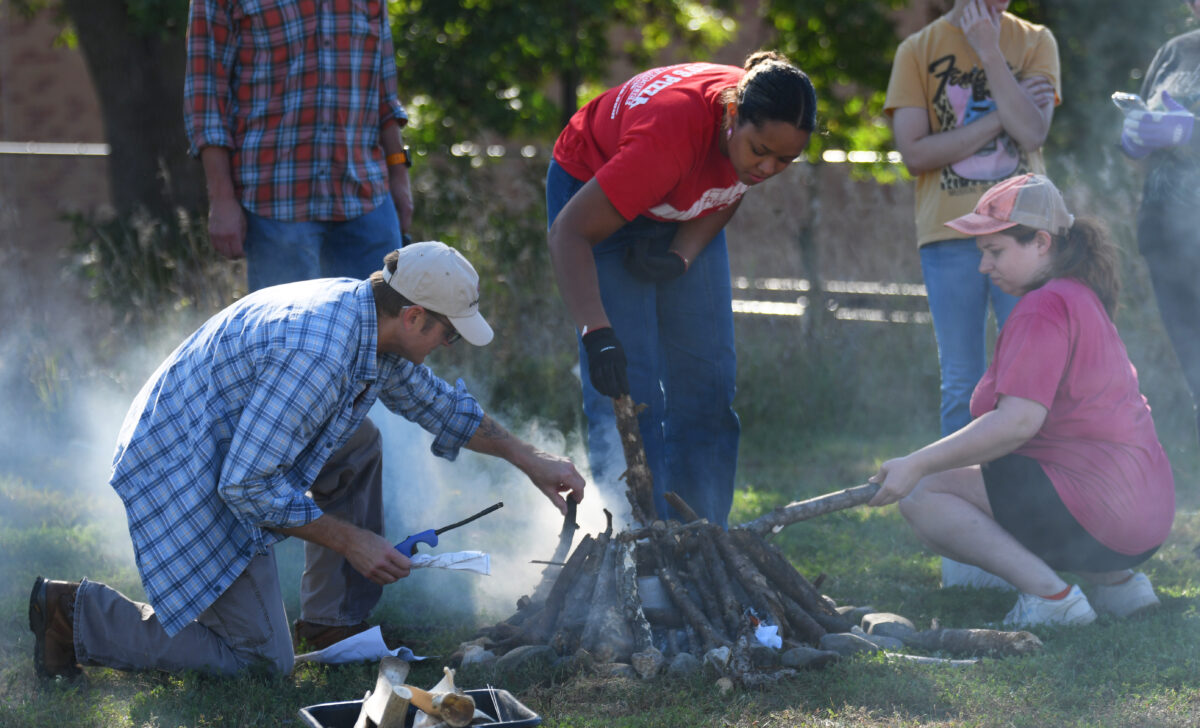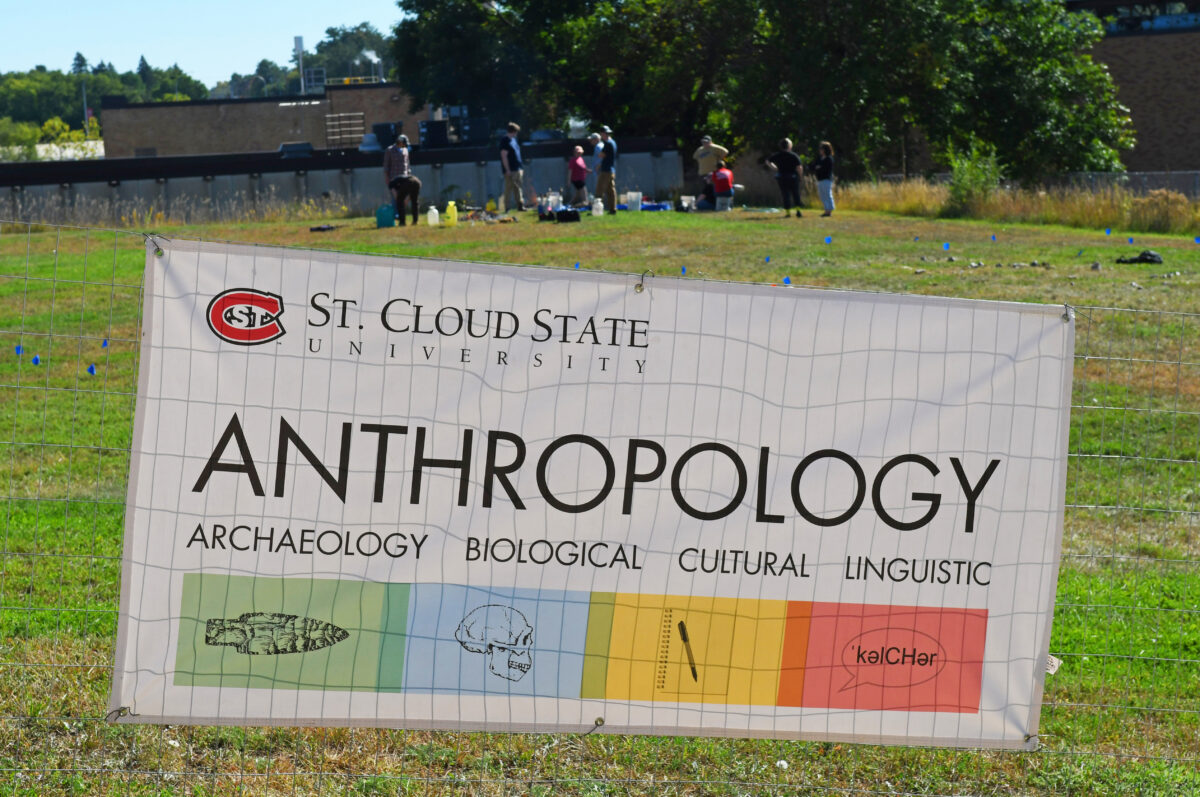
St. Cloud State University anthropology students have an incredible opportunity this semester to create their own excavation site and learn technological techniques that date back thousands of years. And they get to conduct the work right on the SCSU campus.
The archaeology field school is part of a required research sequence that all anthropology majors take to earn their degree, with the class made up of third and fourth year students. The field school is taking place in the grassy field directly between Halenbeck Hall and Facilities Management along University Drive.
“Rather than excavating on a historical site, we’re making our own site,” said Anthropology Professor Mark Muñiz, who’s in his 19th year teaching at SCSU. “We are going through different traditional technologies that have been used by American Indian ancestors up to recent times; hopefully this gives (students) an appreciation of how difficult life was and how brilliant people were with the technology they had.”
Anthropology, within the Department of Social Sciences, alternates between a cultural anthropology ethnographic field school and an archaeology field school each year, a tradition that has lasted for decades. Past archaeology field schools have taken place in various locations around Minnesota, but this year the site is on campus.
The field schools seeks to equip archaeologists with training that is commonly lacking in the industry.
“(Archaeologists) learn how to analyze artifacts in the lab, but they don’t always get the hand-on experience of how the artifacts were actually made in the past,” Muñiz said. “We’re trying to replicate that as best we can. Our students do get hired often because of the field school; they get hired by firms to work as contract archeologists in the state of Minnesota and in the Midwest.”

In recent weeks students have built rock-lined hearths and fired hand-made pottery they’ve built using traditional techniques, even using tools made from bones to dig the area. They also utilized their hearths to boil water with hot rocks and have been working on flint knapping, which is the practice of striking rocks to help create flakes to use for stone tools, arrowheads and other purposes.
“To get an understanding of the methods that people who made these artifacts went through is really interesting,” said Tiffany Woolcott, a senior anthropology and history major. “It gets you more of a cultural view of archeology than you would get just looking at the artifact.”
Once the features of the field school site begin to weather later this fall, the students will come back and excavate the site. They’ll use mapping techniques and take samples back to the lab in Stewart Hall to analyze in the spring, gaining valuable hands-on experience that goes beyond what you can learn in a book.
“I came to SCSU wanting to do something in a museum … but I found out anthropology is what I wanted,” Woolcott said. “Working with people and getting to use history in a practical way.”
The field school teaches future anthropologists the practical skills they will use as professionals. But the work has an even deeper meaning beyond career development: it’s the bonds that the third and fourth-year anthropology students are forming together.
“They’re building a comradery that is really important in terms of the SCSU student experience and their connection to the department and campus,” Muñiz said. “This is making memories that will last a lifetime.”
